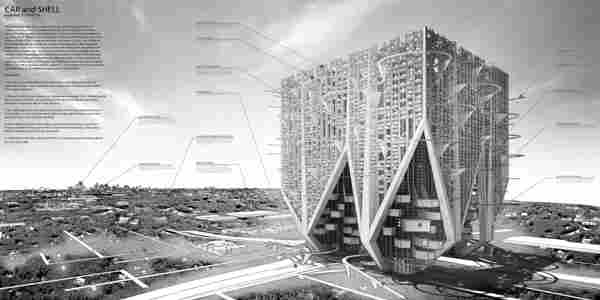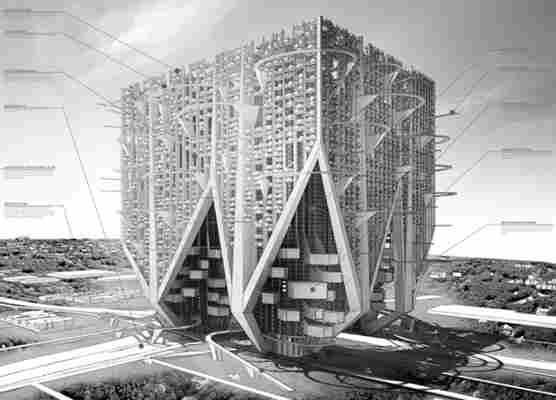Located between two major bridges at the Rhine Carée, a significant public urban space of Cologne, the RheinRing represents the new center & links the two halves of the city. The circular construction serves as a pedestrian walkway directly accessible from the historical city center on the west, the Rhine Boulevard on the opposite side, as well as the flanking Rhine bridges. Situated over this landmark river, the ring allows for an innovative experience as an urban space in the inner city, frequented by pedestrians and cyclists. The gained urban space has great potential for cultural events, sports & leisure activities.
The free-floating ring above the river Rhine is a light arch construction that picks up formal references to the flanking Rhine bridges as well as to the special buildings nearby such as the LanxessArena event center, the main station building, the Museum Ludwig and more. The geometry of the RheinRing is based on the mathematical model of a super ellipse, a flattened ellipse that mediates between the square and the round forms. The bridge above blends smoothly into the square of the Rhine Carée and, following the same formal principle, forms wider and narrower areas, which arise from the planned utilization.
The geometrical model introduced in 1959 by Danish writer and inventor Piet Hein describes a form that is pleasing to the eye and which he himself describes as follows: “The superelljpse has the same convincing unity as the circle and ellipse, but it is less obvious and less banal, it is a relief from the straightjacket of the simpler curves of first and second powers, the straight line and the conic sections.” The cantilever arch bridge forms a barrier-free and inviting access with its generously rounded passages to the water’s edge and to the existing Rhine bridges. Here the new pedestrian promenade joins the existing route forming a multi-layered road network. Since the support-free suspension requires no additional bridge piers in the Rhine Carée, river traffic moving along the north-south axis remains unaffected.
Designers: Marco Hemmerling & Stefan Polónyi
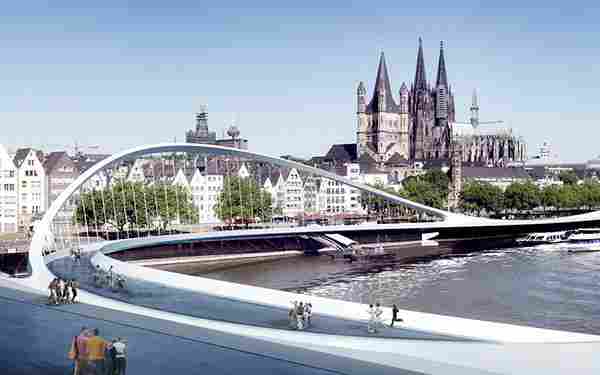
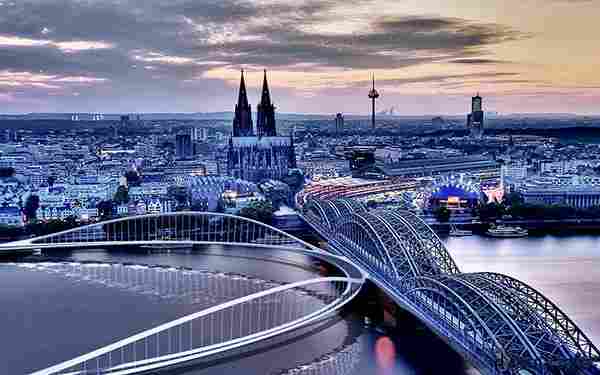
This lillypad-inspired floating sustainable city was designed to support emission free transportation
{"title":"BiodiverCity – BIG Bjarke Ingels Group","author_name":"Видеоканал Архи.ру","author_url":"https://www.youtubeom/user/videoArchiru","type":"video","height":"591","width":"1050","version":"1.0","provider_name":"YouTube","provider_url":"https://www.youtubeom/","thumbnail_height":"360","thumbnail_width":"480","thumbnail_url":"https://i.ytimgom/vi/G59kp4yLbrE/hqdefault.jpg","html":"<iframe width="1050" height="591" src="https://www.youtubeom/embed/G59kp4yLbrE?feature=oembed" frameborder="0" allow="accelerometer; autoplay; clipboard-write; encrypted-media; gyroscope; picture-in-picture" allowfullscreen></iframe>","arve_cachetime":"2021-03-05 09:03:50","arve_url":"https://youtu.be/G59kp4yLbrE","arve_srcset":"https://i.ytimgom/vi/G59kp4yLbrE/mqdefault.jpg 320w, https://i.ytimgom/vi/G59kp4yLbrE/hqdefault.jpg 480w, https://i.ytimgom/vi/G59kp4yLbrE/sddefault.jpg 640w"}
Bjarke Ingels has always pushed the boundaries and turned ambitious concepts into a reality. What I love about his work that he always incorporates sustainability into his architectural structures while moving ahead with the times – Ingels shows us time and again that the future is green. BiodiverCity is one of his most recent projects, it is a city of three islands connected by autonomous vehicles for land, water, and air to make this a transport emission-free habitat off the coast of Malaysia.
Three islands will be built in Penang and will serve as cultural, business, and residential hubs. The most striking thing about the development is that all the transportation on the 4,500 acres will consist of autonomous boats, vehicles, and air travel, making the islands car-free and pedestrian-friendly. Construction is one of the biggest sources of carbon emissions, in fact, even more than the aviation industry. So to reduce the impact on the environment, most buildings will be prefabricated or 3D printed on-site and others will use a combination of bamboo, Malaysian timber, and “green concrete” which is made from recycled materials like aggregate.
The commercial build is still in progress, but will eventually consist of three islands — the Channels, Mangroves, and Laguna. These will include about 2.86 miles of beaches, 600 acres of parks, and 15.53 miles of waterfront. Previous land developments in Penang have disturbed the local habitats and coastal areas, so to make amends and solve this looming issue, BiodiverCity will be designed as connected “urban lilypads” and all islands will be able to harness resources locally. The Mangroves honor the wetlands (and of course, the mangroves) and will be made for business and events with a special space called Bamboo Beacon to host conferences or concerts. Lastly, the Laguna will be a cluster of eight small islands built around a marina and this is where people can live in houses that float, are stilted, or terraced. The three islands will be made up of different “districts” that will altogether house 15,000 to 16,000 people on 50 to 500 acres of land.
BiodiverCity will be planned to be a sustainable city where people and nature not only co-exist but thrive. There will be “buffers” between 50 to 100 meters that will surround each district in order to form a harmonious relationship between the people, the land, and the wildlife – think of these buffers as architectural glues for the new ecosystem. To keep native animals safe in spots that are being inhabited by humans, the builders will also include canopies, waterways, and boardwalks. In line with this strong green approach, there will also be green roofs and open spaces to create a symbiotic relationship between people and nature. “We are literally embarking on a journey to create more of Malaysia for future generations. We have decided to set the bar as high as humanly possible by imagining a new archipelago that aims to be both more culturally and biologically diverse than previous developments.” said firm founder Bjarke Ingels. The islands will be built in collaboration with other private companies like Hijjas, Knight Frank, and Ernst and Young.
Designer: Bjarke Ingels Group
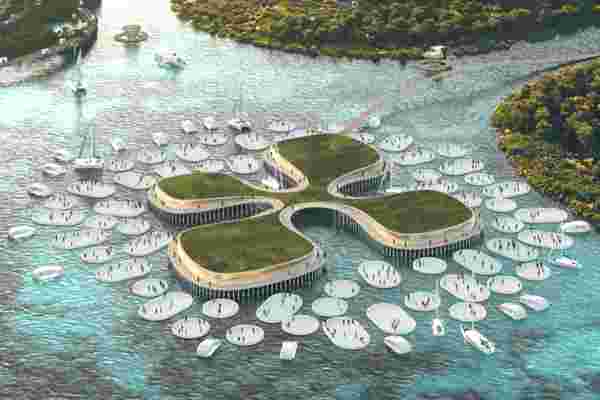
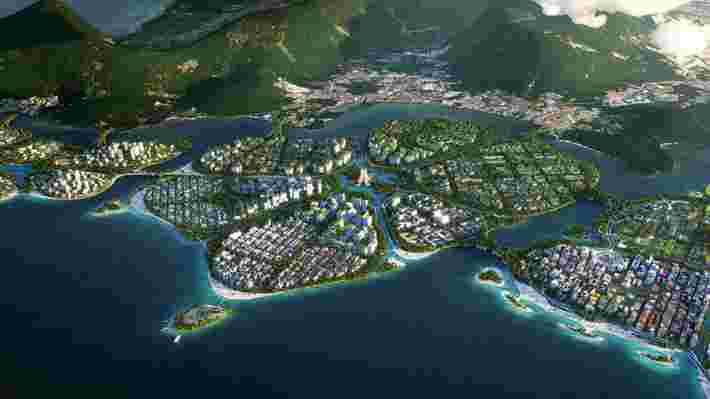
BiodiverCity is a part of the Penang2030 initiative that focuses on sustainable living while improving the state’s quality of life, level of income, and participation from citizens.
The islands will be integrated with a SMART grid that provides residents with live data detailing waste and energy consumption – this will help the community to make informed sustainability-related decisions.
The Channels will have a 500-acre digital park for researchers, educators, families, and businesspeople with virtual reality and robotics that will be the new norm in future cities.
“Our masterplan proposal, BiodiverCity, supports the Penang2030 vision with a clear focus on livability, on stimulating a socially and economically inclusive development, and on environmental sustainability for future generations,” said BIG.
“If Penang is defined by its rich cultural diversity and its abundant biodiversity, we would like to envision the Penang South islands as an archipelago where the two can coexist in a human-made ecosystem, expanding and enhancing one another,” said BIG founder Bjarke Ingels.
New Box Skyline for Detroit
Conceived as box-shaped wireframe, the Car And Shell Skyscraper: Or Marinetti’s Monster – Vertical Suburban Neighborhood, is the answer to the congestion problem experience in the city of Detroit, USA. This new plan comes with recreational and commercial areas and has three main grids in the form of streets, pedestrian pathways, and structure. All of this is intertwined to give us a revolutionary new city façade.
Designers: Mark Talbot & Daniel Markiewicz
